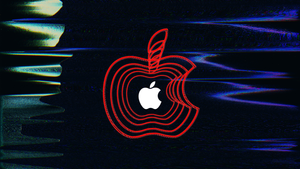Apple Music is planning to start offering incentives to artists and labels that deliver music mastered in Dolby Atmos, the immersive audio standard, according to sources who have spoken to Bloomberg.
Specifics of the plan are not yet clear, though Bloomberg’s sources suggest that a user will not necessarily have to listen to the immersive version of a track in order for the royalty boost. Seemingly, so long as the track is available in Dolby Atmos, it will benefit.
However, many users of Apple Music are likely to be listening on devices that support Dolby Atmos. So, the incentives offered by Apple may accelerate delivery of content mastered in Dolby Atmos, and increase consumption of tracks mastered in the format.
A number of streaming services, including Amazon Music, Tidal, and Qobuz - as well as Apple - have been implementing support for immersive audio standards, including Dolby Atmos, Sony 360 Reality Audio and THX Spatial audio. Many people use the term ‘spatial audio’ to refer to these immersive audio formats.
Apple also has its own proprietary ‘immersive plus’ technology, confusingly called Spatial Audio, which is available to users of Apple AirPods earbuds and AirPods Max headphones. Apple Spatial Audio includes head tracking, meaning that as a user moves their head whilst wearing AirPods they will feel as though they are moving in the audio landscape.
Immersive audio formats are likely to be an increasingly important part of not just music consumption but broader entertainment consumption. Apple, in particular, is heavily invested in developing immersive entertainment technology. Apple’s VisionPro headset will rely heavily on immersive audio - and in particular Apple Spatial Audio - while the company recently revealed a couple of days ago that the iPhone 15 Pro will allow users to capture ‘spatial video’.
While some industry commentators say that this is simply the latest development in a constant ‘format shift’ that has been going on for decades, immersive audio and Dolby Atmos offer significant benefits for music, including greater detail and dynamic range, meaning that music does not need to be ‘boosted’ or made artificially loud.
More significantly, Dolby Atmos is an adaptive audio format that ‘folds down’ very well to work on pretty much any device, giving long term ‘future proofing’ for tracks mastered in Atmos. This means that while Atmos mastered content is best experienced as a fully immersive format with headphones or speakers that support it, this is not essential.
Ultimately, so long as a device - such as a phone - supports Dolby Atmos then, as one audio engineer told CMU, “a kid will be able to play Dolby Atmos out of their phone speaker and it will still sound better than non-Atmos audio”.
While there are cost and workflow implications to providing Atmos-mastered audio, the number of engineers and studios equipped with the necessary equipment and skills has increased significantly over the last year. This means that where there were previously capacity issues for Atmos mastering, this now appears to be less of an issue.
In addition, the creative opportunities that immersive audio formats - including Atmos - offer to artists and labels are exciting. This, coupled with an expected increase in immersive entertainment formats in coming years, offers opportunities for the industry.
However, as more frontline and premium catalogue audio content is delivered in immersive formats and we reach a consumer ‘tipping point’ this presents a potential issue for legacy catalogue managers as the difference between immersive-mastered content and non-immersive content becomes clearer to consumers, meaning non-immersive audio may lose out.

